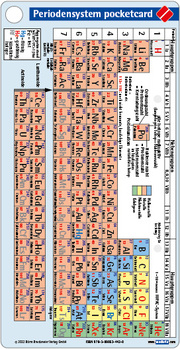3D QSAR in Drug Design 2 (kartoniertes Buch)
3D QSAR in Drug Design 2
Ligand-Protein Interactions and Molecular Similarity, Three-Dimensional Quantitative Structure Activity Relationships 2
Erschienen am
07.12.2010
Bibliographische Informationen
ISBN/EAN: 9789048149346
Sprache: Englisch
Seiten: ix, 417 S.
Auflage: 1. Auflage 1998
Bindung: kartoniertes Buch
Beschreibung
Significant progress has been made in the study of three-dimensional quantitative structure-activity relationships (3D QSAR) since the first publication by Richard Cramer in 1988 and the first volume in the series. 3D QSAR in Drug Design. Theory, Methods and Applications, published in 1993. The aim of that early book was to contribute to the understanding and the further application of CoMFA and related approaches and to facilitate the appropriate use of these methods. Since then, hundreds of papers have appeared using the quickly developing techniques of both 3D QSAR and computational sciences to study a broad variety of biological problems. Again the editor(s) felt that the time had come to solicit reviews on published and new viewpoints to document the state of the art of 3D QSAR in its broadest definition and to provide visions of where new techniques will emerge or new appli- tions may be found. The intention is not only to highlight new ideas but also to show the shortcomings, inaccuracies, and abuses of the methods. We hope this book will enable others to separate trivial from visionary approaches and me-too methodology from in- vative techniques. These concerns guided our choice of contributors. To our delight, our call for papers elicited a great many manuscripts.
Inhalt
Volume 2: Section 1: Ligand-Protein Interactions. Progress in Force Field Calculations of Molecular Interaction Fields and Intermolecular Interactions; T. Liljefors. Comparative Binding Energy Analysis; R.C. Wade, et al. Receptor-Based Prediction of Binding Affinities; T.I. Oprea, G.R. Marshall. A Priori Prediction of Ligand Affinity by Energy Minimization; M.K. Holloway. Rapid Estimation of Relative Binding Affinities of Enzyme Inhibitors; M.R. Reddy, et al. Binding Affinities and Non-Bonded Interaction Energies; R.M.A. Knegtel, P.D.J. Grootenhuis. Molecular Mechanics Calculations on Protein-Ligand Complexes; I.T. Weber, R.W. Harrison. Section 2: Quantum Chemical Models and Molecular Dynamics Simulations. Some Biological Applications of Semiempirical MO-Theory; B. Beck, T. Clark. Density-Functional Theory and Molecular Dynamics: A New Perspective for Simulations of Biological Systems; W. Andreoni. Density-Functional Theory Investigations of Enzyme-Substrate Interactions; P. Carloni, F. Alber. Molecular Dynamics Simulations: A Tool for Drug Design; D. Rognan. Section 3: Pharmacophore Modelling and Molecular Similarity. Bioisosterism and Molecular Diversity; R.D. Clark, et al. Similarity and Dissimilarity - A Medicinal Chemist''s View; H. Kubinyi. Pharmacophore Modeling: Methods, Experimental Verification and Applications; A.K. Ghose, J.J. Wendoloski. The Use of Self-Organizing Neural Networks in Drug Design; S. Anzali, et al. Calculation of Structural Similarity by the Alignment of Molecular Electrostatic Potentials; D.A. Thorner, et al. Explicit Calculation of 3D Molecular Similarity; A.C. Good, W.G. Richards. Novel Software Tools for Chemical Similarity; R.S. Pearlman, K.M. Smith. New 3D Molecular Descriptors: The WHIM Theory and QSAR Applications; R. Todeschini, P. Gramatica. EVA &endash; A Novel Theoretical Descriptor for QSAR Studies; T.W. Heritage, et al. Volume 3: Section 1: 3D QSAR Methodology. CoMFA and Related Approaches. 3D QSAR: Current State, Scope, and Limitations; C. Martin. Recent Progress in CoMFA Methodology and Related Techniques; U. Norinder. Improving the Predictive Quality of CoMFA Models; T. Kroemer, et al. Cross-Validated R2 Guided Region Selection for CoMFA Studies; A. Tropsha, S.J. Cho. GOLPE-Guided Region Selection; G. Cruciani, et al. Comparative Molecular Similarity Indices Analysis - CoMSIA; G. Klebe. Alternative Partial Least Squares (PLS) Algorithms; F. Lindgren, S. Rännar. Section 2: Receptor Models and Other 3D QSAR Approaches. Receptor Surface Models; M. Hahn, D. Rogers. Pseudoreceptor Modeling in Drug Design: Applications of Yak and PrGen; M. Gurrath, et al. Genetically Evolved Receptor Models (GERM) as a 3D QSAR Tool; D.E. Walters. 3D QSAR of Flexible Molecules Using Tensor Representation; W.J. Dunn III, A.J. Hopfinger. Comparative Molecular Moment Analysis (CoMMA); B.D. Silverman, et al. Section 3: 3D QSAR Applications. The CoMFA Steroids as a Benchmark Data Set for Development of 3D QSAR Methods; E.A. Coats. Molecular Similarity Characterization Using CoMFA; T. Langer. Building a Bridge Between G-Protein-Coupled Receptor Modelling, Protein Crystallography, and 3D-QSAR Studies for Ligand Design; K.H. Kim. A Critical Review on Recent CoMFA Applications; K.H. Kim, et al. List of CoMFA References, 1993-1996; K. H. Kim.
Andere Artikel von "Hugo Kubinyi/Gerd Folkers/Yvonne C Martin"
Lieferbar innerhalb 14 Tagen

Weitere Artikel aus der Kategorie "Chemie"
Vergriffen

Lieferbar innerhalb ca. einer Woche

Lieferbar innerhalb 24 Stunden







